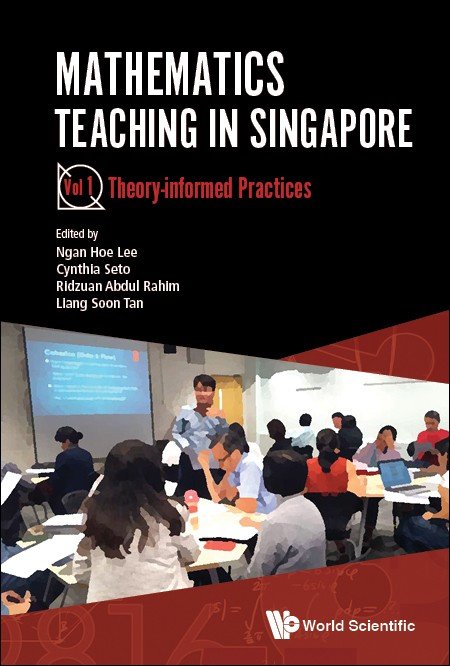System Upgrade on Tue, May 28th, 2024 at 2am (EDT)
Existing users will be able to log into the site and access content. However, E-commerce and registration of new users may not be available for up to 12 hours.For online purchase, please visit us again. Contact us at customercare@wspc.com for any enquiries.
This book series will provide readers with the landscape of mathematics teaching practices in Singapore classroom. In this first book of the series, Theory-Informed Practices, the book will have a collection of teachers' classroom practices that are informed by theory. It will provide classroom exemplars of how teachers make use of theories to inform their practices to better cater to the needs of the learners. This book which targets at the practitioners is written in a way that help the practitioners to be better in consuming and applying such efforts in the own classrooms. It provides the interested readers not only the landscape but also the spectrum of pedagogical approaches and strategies that are theoretically informed and adopted by the Singapore mathematics teachers. This book is written by expert teachers for teachers. It will also be of interest to graduate students, mathematics educators and the international mathematics education community who are looking for greater insights to the Singapore mathematics classrooms.
Sample Chapter(s)
Foreword
Chapter 1: Use of Whiteboard for Mathematics Teaching
Contents:
- Foreword
- Contents
- Introduction (Lee Ngan Hoe, Cynthia Seto, Ridzuan Abdul Rahim and Tan Liang Soon)
- Enhancing Teaching:
- Use of Whiteboard for Mathematics Teaching (Chan Min Lie)
- Designing Technology-Enhanced Mathematics Lessons with SAMR Model (Tay Lee Yong, Theresa Heng, Judy Ng Kay Joo and Lye Sze Yee)
- Concrete-Pictorial-Abstract Approach: Fostering Understanding in Mathematics (Cynthia Seto, Goh Yueh Yuan, Teh Wan and Chang Suo Hui)
- Assessing Students' Learning Through the Newman Error Analysis Guidelines (Elaine Cai Yu Ling)
- A Mathematics Teacher's Example Use: Less Noise to More Noise (Ng Lay Keow and Dindyal Jaguthsing)
- Harnessing Contrasting Examples to Support Robust Understanding in Algebra (Pang Yen Ping and Prashant Jayapragas)
- Strategies to Foster Mathematical Reasoning and Communication (Wong Lai Fong and Low Leng)
- Quality Mathematics Tasks for Better Learner Engagement (Radha Devi Oonnithan and Tan Liang Soon)
- A Mathematical Modelling Approach to Decision Making (Leong Swee Ling, Tan Sek Jiau, Eldwen Ong and Gayatri Balakrishnan)
- Realising Constructivist Learning Design in the Teaching of Gradients of Curve (Pang Yen Ping, Zhu Ying and Karimshah Sultan)
- Empowering Learners:
- Teaching Through Problem Solving (Pearlyn Lim Li Gek)
- Orchestrating Classroom Discussions for Deep Learning (Tan Liang Soon, Cheng Mee Eng and Cheum Foong Yee)
- Scaffolding Children's Thinking in Solving an Online Real-World Mathematics Task (Lim Gek Wah)
- Making Connections for Meaningful Learning of Symbolic Algebra (Tan Liang Soon and Choon Ming Kwang)
- Key to 'Understand the Problem': Promote Metacognitive Strategies (Loh Mei Yoke)
- Promoting Metacognition Through Lesson Closure (Tan Weicun and Lee Ngan Hoe)
- Differentiated Instruction in Our Mathematics Classrooms (Choy Ban Heng, Low Leng and Leong Swee Ling)
- Mathematical Tasks to Foster Reasoning and Communication (Gayatri Balakrishnan and Chew Chong Kiat)
- Closing Teaching and Learning Gaps in Mathematics Classrooms (Foo Kum Fong, Huang Jun Song, Tan Keng Wee and Heng Hui Hui)
- Contributing Authors
- Keyword Index
- Acknowledgement
Readership: Graduate students, practitioners, mathematics educators and the international mathematics education community who are looking for greater insights to the Singapore mathematics classrooms.























